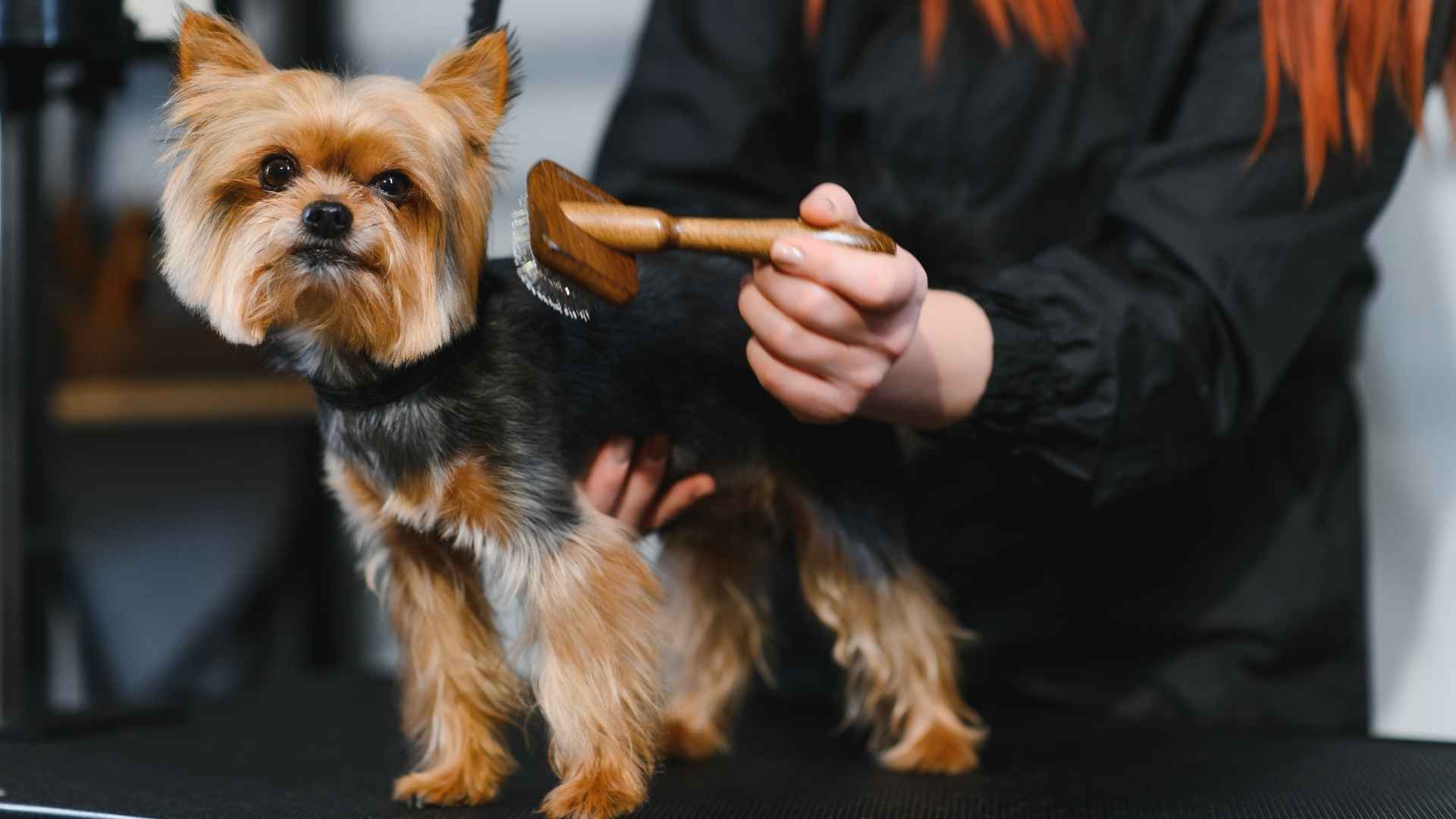We talk a lot about love when it comes to dogs. The loyalty. The friendship. The fun. But there’s another side to dog ownership that rarely gets mentioned—maintenance.
Every dog needs care, but some need much more than a walk and a bowl of food. Some need your time, your effort, and a brush in your hand almost every day.
Not because they’re high-maintenance, but because their health depends on it. Skip it, and problems build fast, painful knots, skin infections, and stress. This is the part most people overlook until it’s too late.
So if you’re planning to welcome a dog into your life, or already have one that sheds like a snowstorm, you need to read this. We’re diving into the dog breeds that need regular grooming, and what that really means—not in theory, but in everyday reality.
Regular Grooming Dog Breeds
1. Poodle
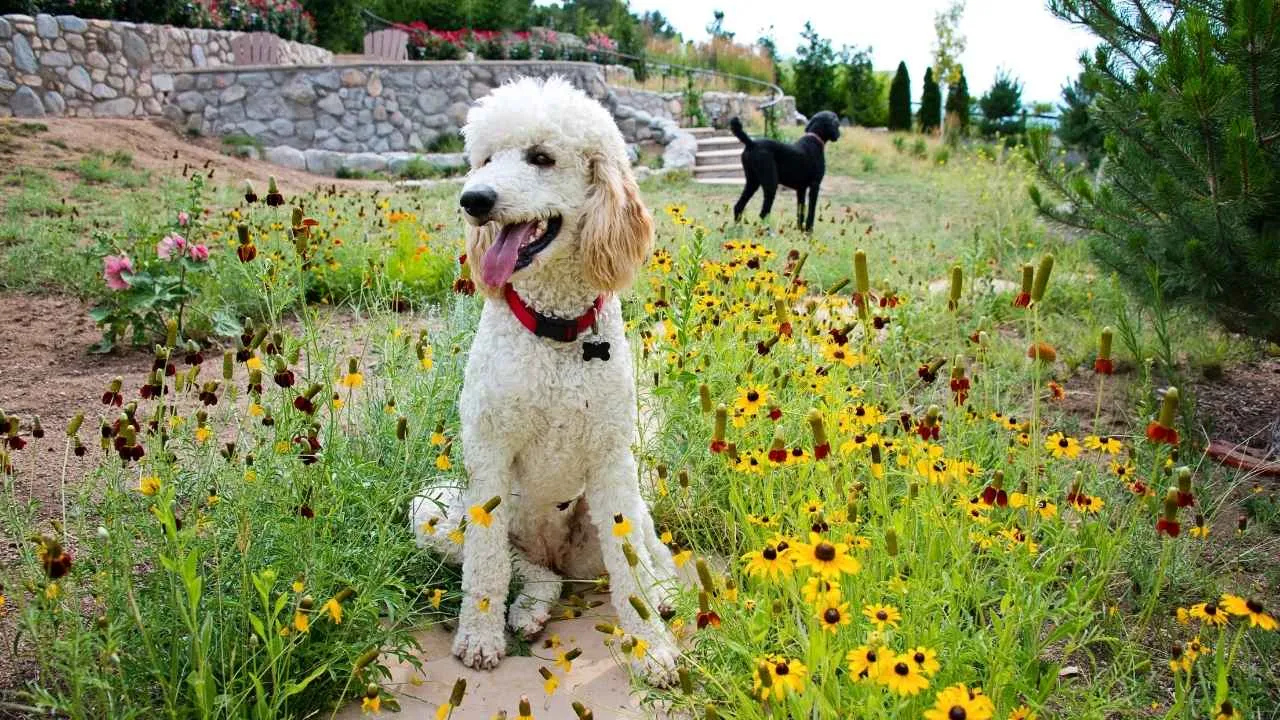
The Poodle’s curly, dense coat doesn’t shed like many dogs—but that means more maintenance, not less. Those curls can mat quickly if not handled properly. Regular brushing is essential to keep the coat healthy and avoid painful tangles.
More than just looks
Frequent grooming sessions aren’t just about appearance—they’re key to the dog’s comfort and hygiene. Dirt and moisture can easily get trapped close to the skin. Many owners schedule professional pet grooming every 4–6 weeks to stay ahead.
Sensitive to skipped care
Poodles tend to react fast to missed grooming, both physically and behaviorally. Matted fur can irritate their skin or limit movement. Even their ears need close attention to prevent wax buildup and moisture-related issues, as mentioned in PetMD.
Tailored needs for all sizes
Standard, Miniature, and Toy Poodles all require the same level of grooming attention. These aren’t just show dogs—they’re active, intelligent, and responsive. Among certain breeds, Poodles stand out for how directly grooming affects their overall health.
2. Shih Tzu
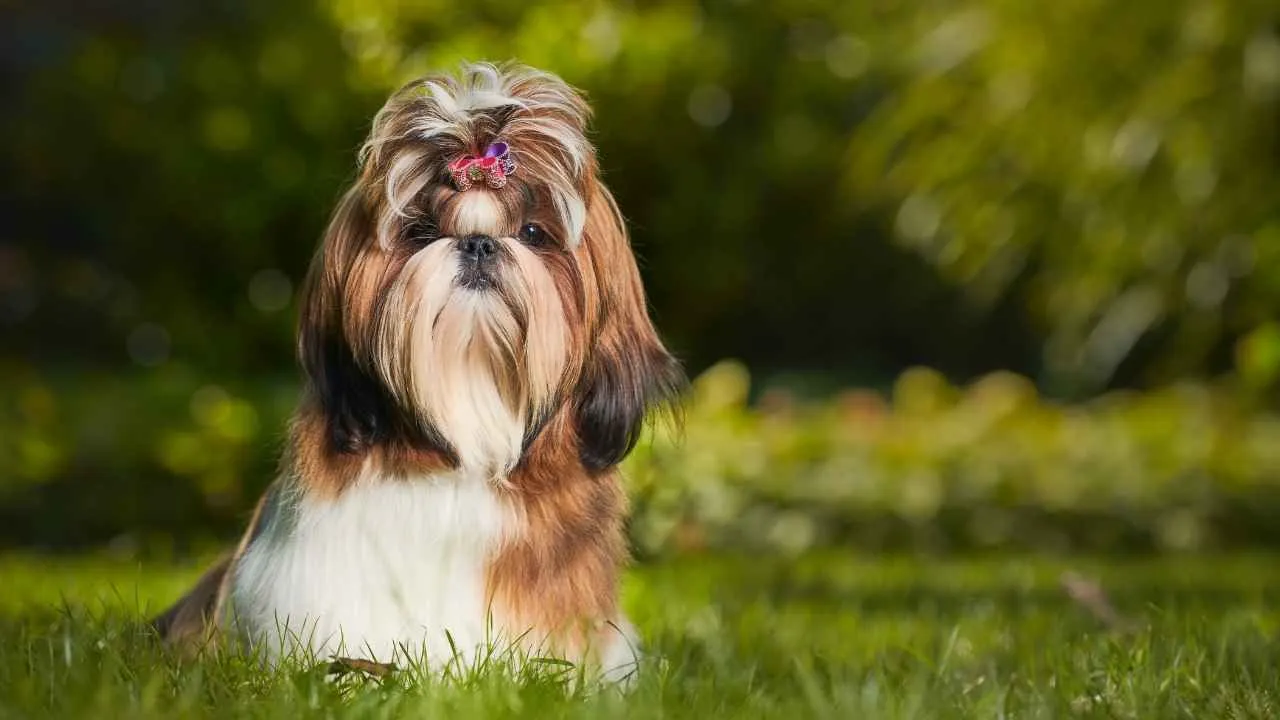
The Shih Tzu was bred with a long, flowing double coat that grows continuously, requiring intensive care to prevent matting. This isn’t just about looks—it’s about comfort and skin health. Brushing every day is often necessary to keep their hair manageable.
Frequent trims and upkeep
Because their hair can easily drag on the floor or cover their eyes, most owners rely on professional grooming every 3 to 4 weeks. Eye stains and tear buildup also need regular cleaning, as stated in All Shih Tzu. A missed appointment can mean more than just a messy look.
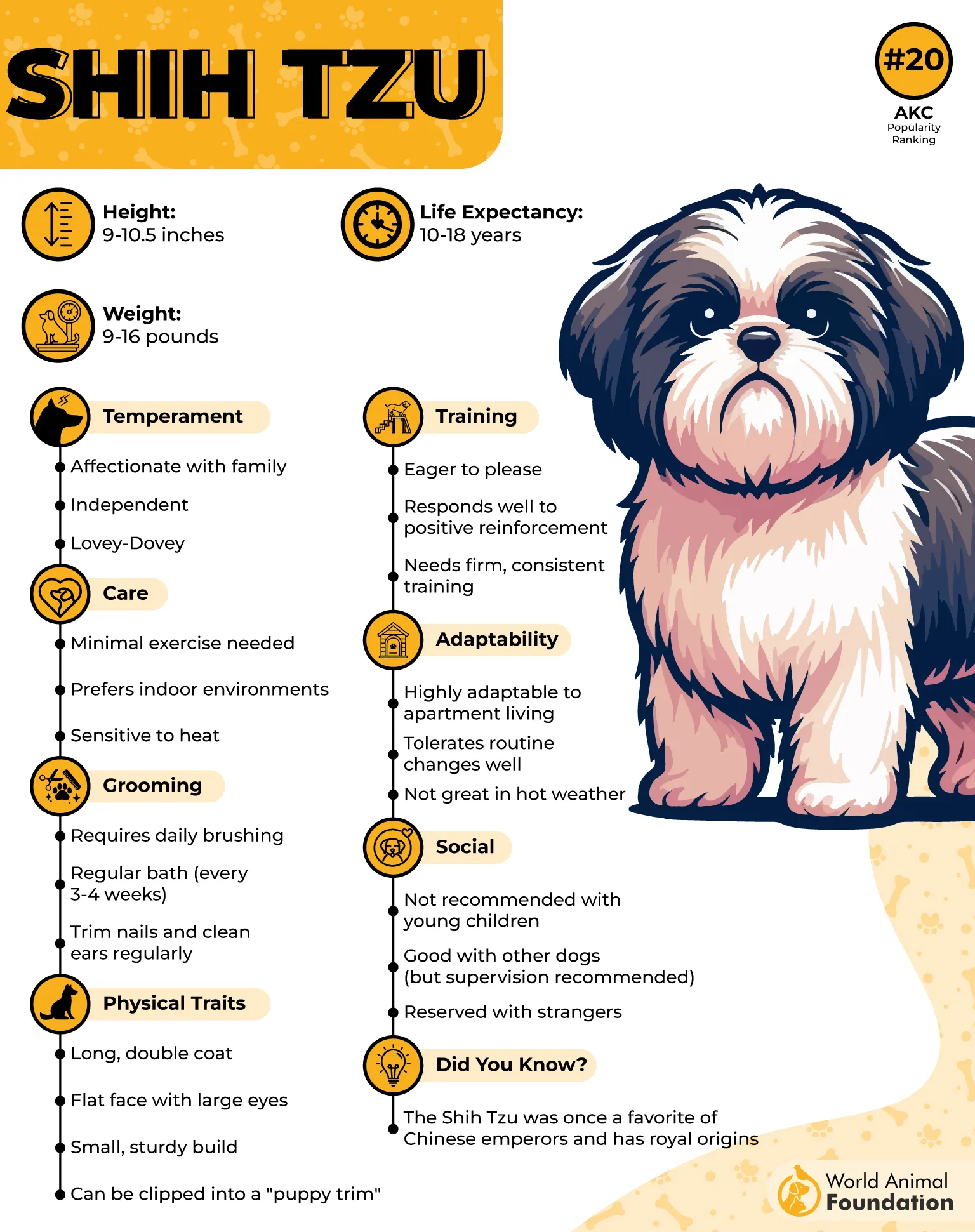
Grooming beyond the basics
It’s not just the coat—Shih Tzus need attention to nails, ears, and especially their facial folds. Moisture can collect in skin folds, creating a risk for irritation. Proper grooming helps prevent odor, infections, and long-term skin issues.
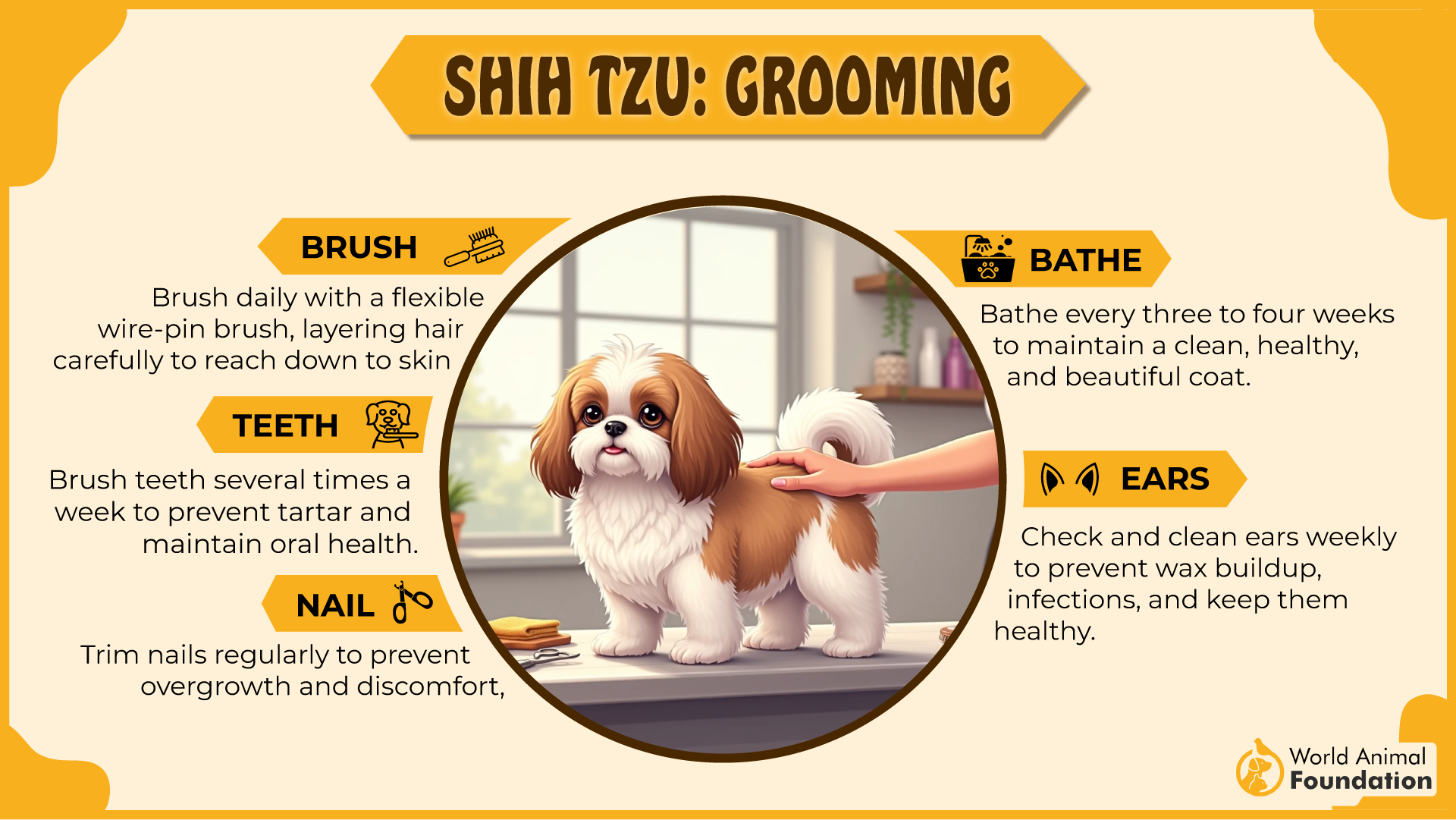
Surprisingly spirited personality
Despite their royal appearance, Shih Tzus are alert and can be surprisingly active dogs indoors. They enjoy short bursts of play and need time to cool down after. This furry friend might look dainty, but underneath that silky coat is a lot of playful energy.
3. Maltese
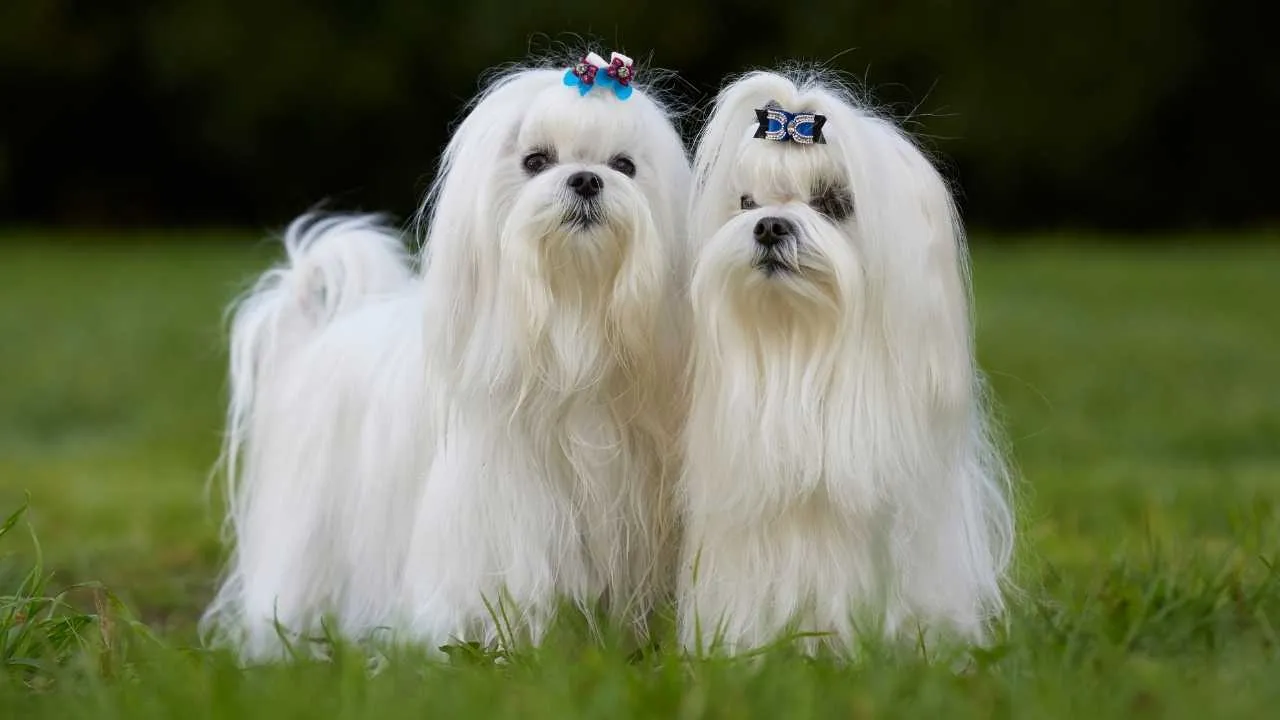
The Maltese has a long, fine, floor-length coat that mats quicker than most breeds if not cared for daily. Their hair lacks an undercoat, which means knots form close to the skin. Even missing grooming for a day or two can cause serious tangling.
Tear staining and facial care
One grooming challenge specific to Maltese is their tendency to develop tear stains around the eyes, as highlighted in Britannica. These need daily cleaning to avoid discoloration and skin irritation. A consistent grooming routine should include gentle face wipes and trimmed facial hair.
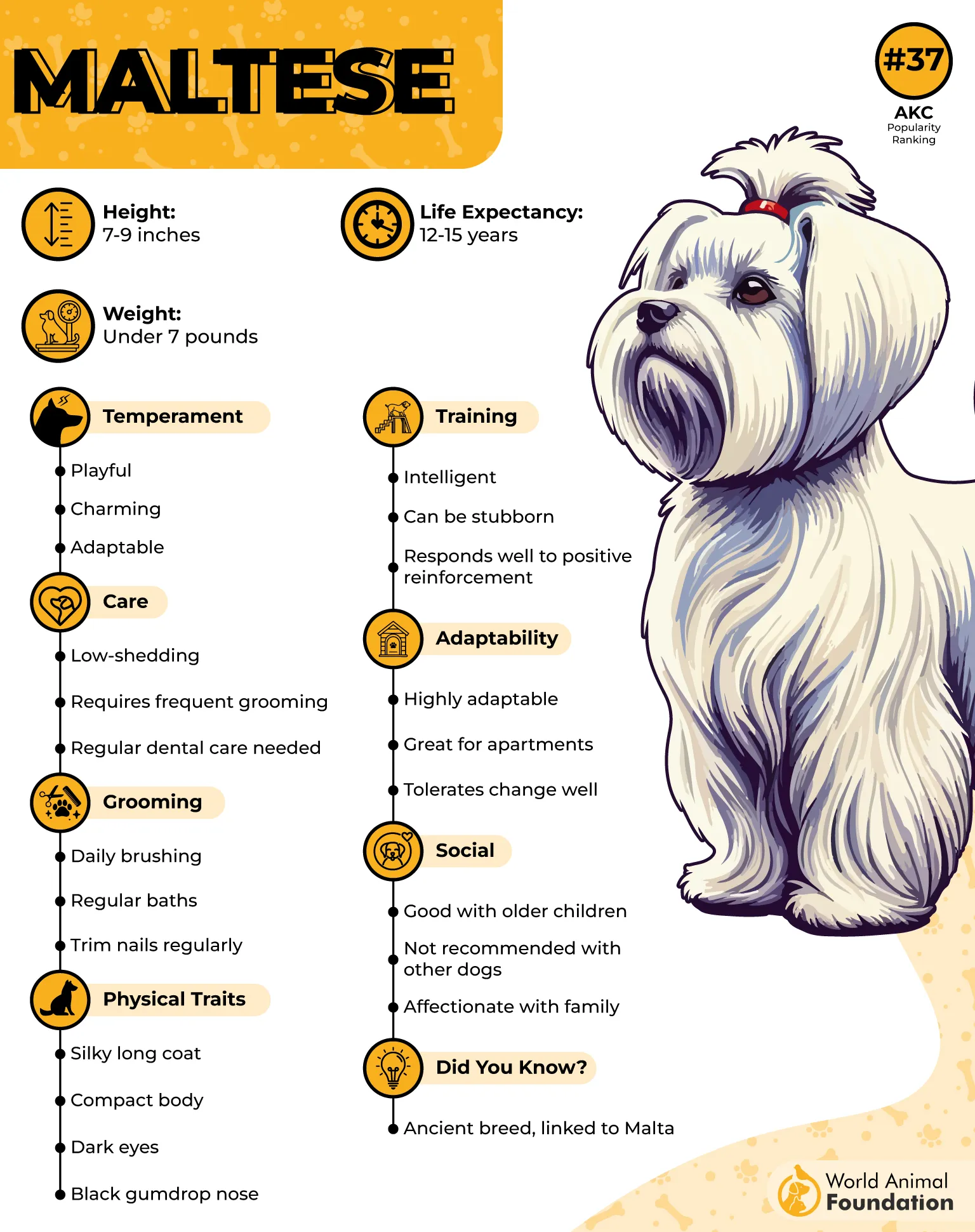
Young dogs need early habits
Start grooming young dogs early to prevent resistance and anxiety later. Their fine coat is delicate, and early brushing builds patience and tolerance. Puppies that are introduced to combing and cleaning early often adapt better to full grooming sessions.
Not just a comb-and-go breed
Many owners assume their small size equals easy care—it doesn’t. Maintaining that show-stopping coat requires dedication and know-how. Some groomers recommend specific grooming tips, like using a spritz bottle while brushing to reduce breakage and static.
4. Bichon Frise

The Bichon Frise has a dense double coat—soft underneath and tightly curled on top—that tangles almost overnight. Skipping a day of brushing often leads to mats. Their grooming requirements are more intensive than they first appear.
Bathing has a schedule
Most Bichons need a proper bath every two to three weeks, not just when dirty. Their light coat absorbs oils quickly and can get discolored around the mouth and eyes. Without routine care, their fur loses its trademark fluff.
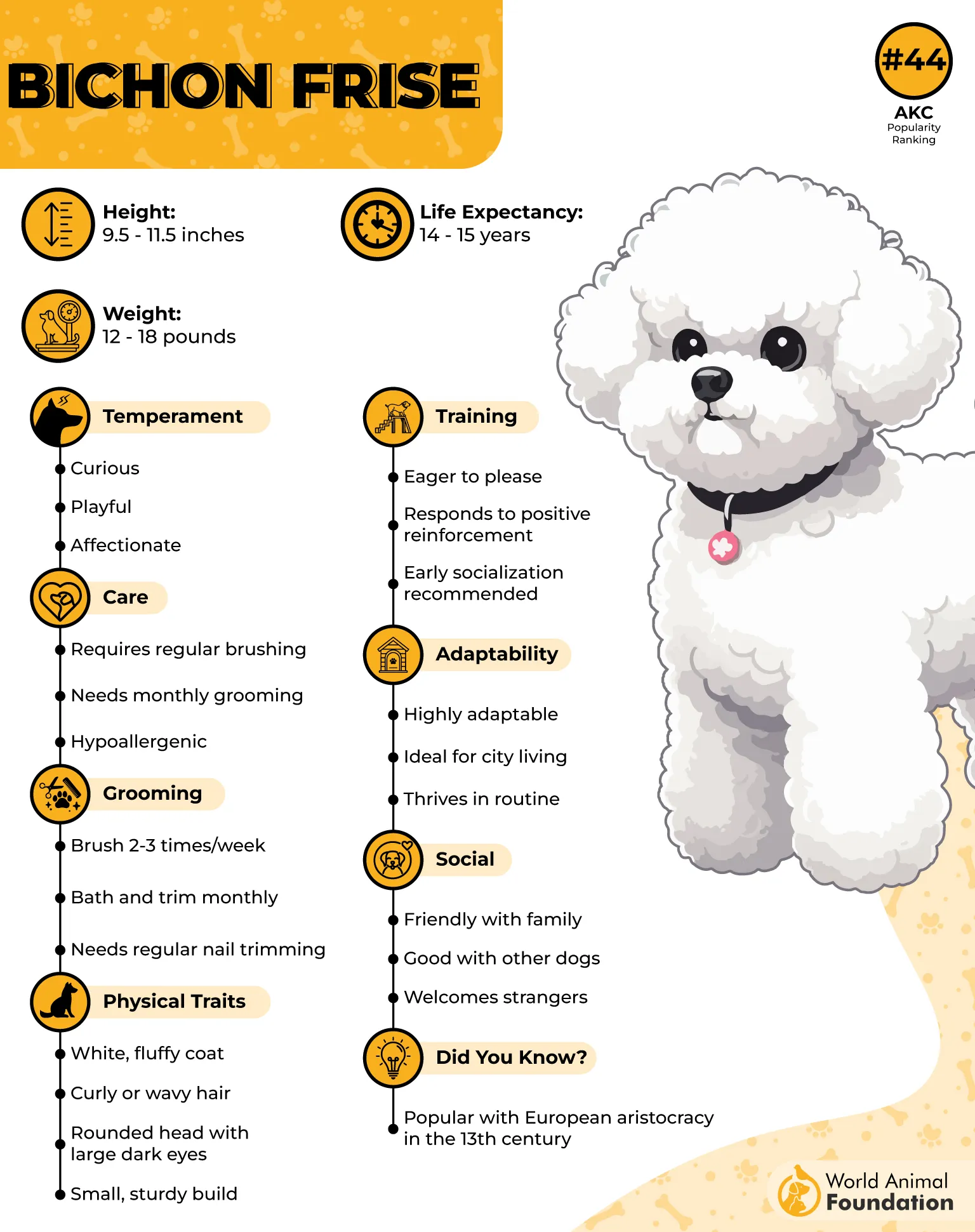
Trimmed by design
Professional grooming sessions are essential every 4–6 weeks to maintain their rounded silhouette. The “powder-puff” look isn’t just aesthetic _it keeps the coat manageable and skin ventilated. Clippers are avoided in favor of scissors to preserve texture.
Looks aren’t the only reason
While their adorable appearance makes them stand out, it’s their skin sensitivity that makes consistent grooming critical.
Compared to other breeds, Bichons are more prone to skin irritation from trapped moisture or product residue, as per Vets Love Pets. Still, they remain excellent companions for those willing to keep up.
5. Yorkshire Terrier
Yorkies have hair with a texture closer to human strands. That means it keeps growing—and tangling—until it’s trimmed. Without daily brushing, it’s easy for knots to form close to the skin, especially behind the ears.
Trim styles matter
The traditional long show coat is elegant but high-maintenance and easily picks up debris. Most pet owners opt for a “puppy cut” to make upkeep manageable. Professional groomers are usually booked every 4 to 6 weeks for a proper finish.
Small dog, big grooming needs
Even with a shorter cut, Yorkies need their faces cleaned often to prevent tear staining. Their fine coat also becomes oily faster than other dogs, especially around the muzzle. Routine baths are a must to prevent buildup and keep the coat light.
Routine equals comfort
They’re wonderful companions, but their coat demands consistency. Missed sessions can lead to discomfort and skin irritation. Compared to other breeds of their size, Yorkies are far more dependent on a tight grooming schedule to stay healthy and clean.
6. Lhasa Apso
The Lhasa Apso’s hair grows continuously, much like human hair, which means it needs consistent attention. Without trimming and daily brushing, it tangles down to the skin. Regular care is the only way to keep their coat free from painful mats.
Not a fan of shortcuts
Quick grooming hacks don’t work with this breed. Their long, heavy coat traps dust, debris, and even odors. Many owners choose to bathe them weekly to keep their coats fresh and manageable, especially if the dog goes outside often.
Grooming affects their mood
Neglect shows fast in their behavior—irritability, pawing, or avoiding touch. Tangled hair around the legs or face can affect their well-being more than people expect. They’re emotionally sensitive to discomfort caused by a messy coat.
Tension with unfamiliar pets
While loyal to their family, Lhasas can be stand-offish with other pets. Their protective instinct dates back to guarding Tibetan monasteries. That dignified streak shows even during grooming, they prefer calm hands and zero rushing.
7. Afghan Hound
The Afghan Hound’s long, flowing coat isn’t just dramatic—it’s prone to tangling if not brushed thoroughly several times a week. Their fine, human-like hair attracts debris easily. Even missed spots can knot quickly and tighten near the skin.
Grooming is a time investment
Each grooming session takes patience, not just tools. Owners often spend over an hour managing the length and texture. Bathing can’t be rushed either—thorough rinsing is crucial, or the coat turns stiff and dull after drying.
Drying is part of the ritual
Air-drying isn’t an option with this breed. High-velocity dryers are often used to avoid matting during the drying process. Their coat must be straightened section by section to keep the signature look intact.
Training matters more than usual
Afghans can be sensitive to grooming if not introduced to it early. Without gradual conditioning, they may resist touch around the legs or ears. Groomers often space sessions strategically to help build tolerance without stress.
Conclusion
Owning a long-haired dog isn’t just about brushing and bows—it’s about daily comfort and long-term health. While these haired breeds may demand more effort, the payoff is a happier, cleaner, and more confident companion. Whether it’s ear cleaning, nail trimming, or managing loose hair, skipping steps can lead to discomfort fast.
Frequent brushing is also essential. From grooming appointments to at-home routines, these dogs require time, care, and know-how. And even short-haired dogs benefit from weekly brushing to distribute natural oils and reduce shedding.
Every grooming session becomes a chance to bond. Once you understand the grooming techniques that work for your dog’s coat type, basic grooming becomes second nature. So if you’re drawn to long-haired breeds, just remember: care is more than cosmetic—it’s essential.


